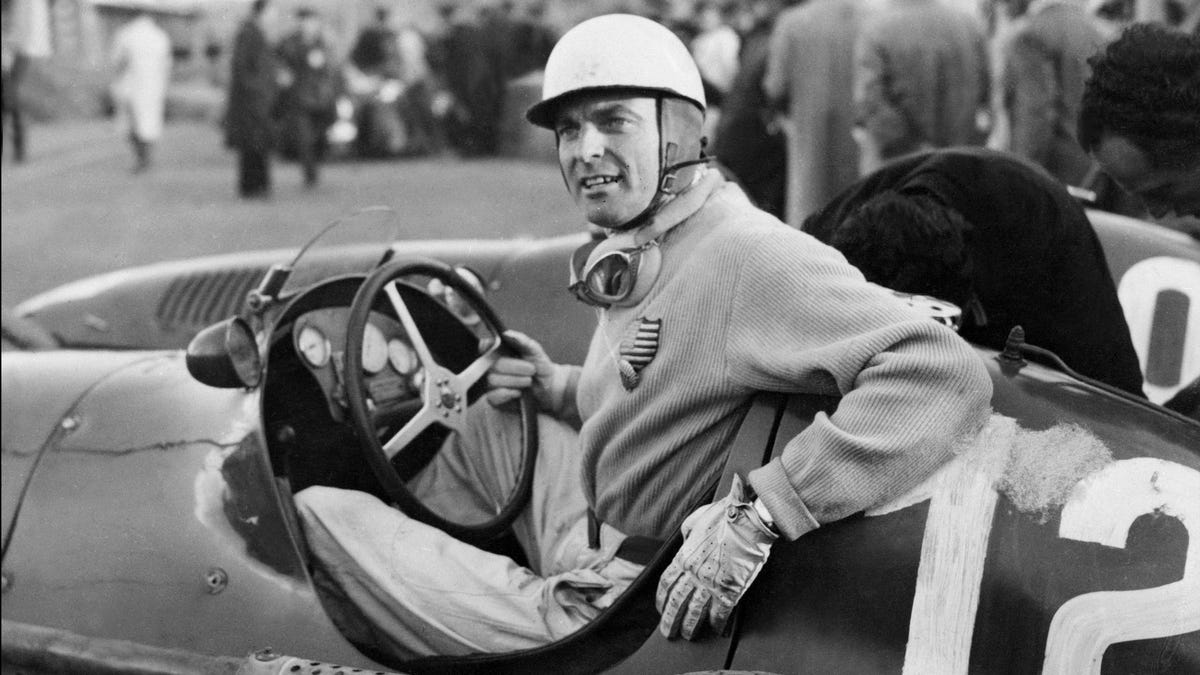

We remember men like Phil Hill or Mario Andretti, often crediting them with achieving some of America’s most important ‘firsts’ in Formula One. But there’s one man we often neglect to mention: Harry Schell.
That might be because Schell’s origins are a bit murky. He was born and largely raised in Paris, France, but his parents were American expatriate Laury Schell and American heiress Lucy O’Reilly Schell. Laury was an occasional racer himself while Lucy, you may remember, became heavily invested in the Delahaye company and used their cars to found her own team and run Jewish driver René Dreyfus. Any child of theirs was well situated to make a splash in motorsport, and Harry Schell certainly seemed ready to make it happen.
The path, though, wasn’t easy. Just before World War II, his parents were involved in a road accident that killed his father and severely injured his mother. They went to America in 1940, where Schell took on the running of his mother’s team, Écurie Bleue, at the Indianapolis 500. He had volunteered with the Finnish Air Force during the Winter War in 1939, so joining up with the United States Tank Corps was a smart next step.
He was ready to take advantage of the postwar thirst for adventure by opening l’Action Automobile, a sports bar in Paris, before finding himself competing in the newly-formed Formula One. He raced under the American banner, making him the first ever American to compete in the sport.
His first outing was, admittedly, a disaster. He debuted in a Cooper at Monte Carlo, then proceeded to cause an accident at the harbor chicane that wiped out most of the field. He was, however, competing well until that point.
G/O Media may get a commission
It was a bit representative of his on-track career as a whole: he never won a race, and he made quite a reputation for himself as a womanizer. But as he progressed and began racing in more competitive cars. His first points-scoring finish came in 1956, when he finished fourth at the Belgian Grand Prix. He finished twice on the podium: once in third at the 1957 Pescara Grand Prix and again in second at the 1958 Dutch Grand Prix. He also performed well in endurance races like the 12 Hours of Sebring.
One of the most interesting tidbits about his career came at the Race of Two Worlds, an exhibition race held at Monza. In it, American teams from USAC and European teams from F1 were sent to compete against one another on the banked oval to see who would come out triumphant. In 1958, Schell was one of three American drivers who competed on the F1 side of things, in direct competition with their American counterparts. The other two drivers were Masten Gregory and Phil Hill.
But his competitors loved him. Despite his disastrous debut, he became known as a safe competitor who grew more and more vocal about the promotion of safety equipment that would protect drivers and potentially save lives.
As 1960 rolled around, Schell was aging out of motorsport. He was 40, and he was running out of prospects. So, he borrowed his mother’s Écurie Bleue team name and used it to run a private Cooper in the F1 World Championship. That last season didn’t start off very promising — he retired in Argentina, the season opener — but things were about to get much worse.
During practice for the non-championship International Trophy event at Silverstone, Schell was driving at nearly 100 mph when his car slid into the mud just off of Abbey Curve. He lost a wheel and, subsequently, control of the car. His Cooper spun through the air, pierced through a safety barrier, and saw a brick wall collapse on impact. Schell was, of course, not wearing a safety harness, so he had half flopped out of the car by the time all was said and done. His head had smacked against the wall, breaking his neck and killing Schell instantly.
His team owner, Ken Gregory, recalled the moment later, as reported in Motorsport Magazine: “There was this great barrel-chested man, not a mark on him, lying on the slab. The oddest thing, though, apart from the fact that I had never been close to a dead body before, never even seen one, was that I could absolutely swear that he was smiling. I can still see him now.”
It was a difficult era, where deaths like Schell’s were common. In fact, Schell had been truly hurt by the death of his friend, Marquis Alfonso de Portago, back in 1957. Schell was the one who taught the Spaniard to drive and was torn up after Portago was killed in the last-ever Mille Miglia. The wreck took both de Portago’s life as well as that of his co-driver, both of whom were severely disfigured after hitting a concrete highway milestone. It also killed nine spectators, five of whom were children.
Schell used that crash to reevaluate his priorities and began chasing better and better racing equipment, which saw him wrap up the best F1 season of his career. It also served as his inspiration to begin asking European open-wheel cars to adopt roll-bars, which were standard in America.
Harry Schell was likely at the end of his career when he died, so it wasn’t as if he were going to be breaking records or setting the world on fire. But it’s unfortunate that he’s been passed over in the collective motorsport memory when it comes to thinking about the impact of Americans in F1. He was no World Champion — he wasn’t even a race winner — but Schell’s place in the sport is one that American fans should be aware of.




